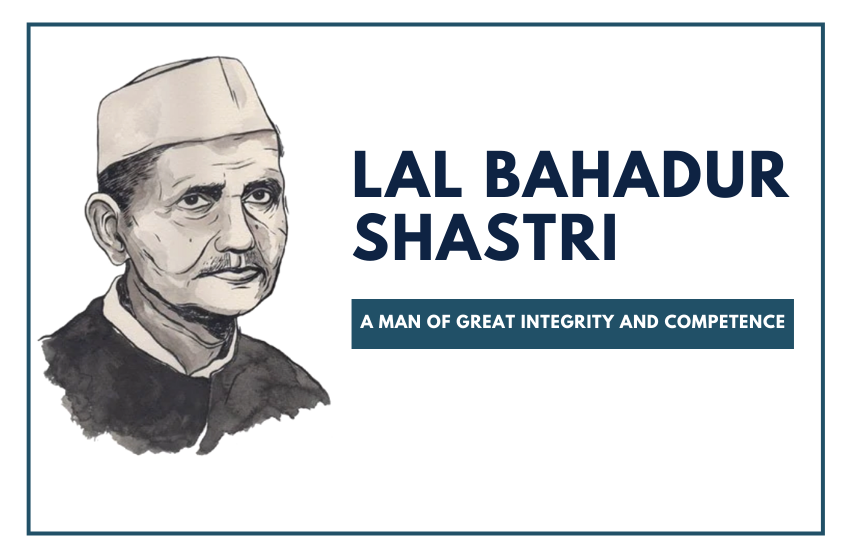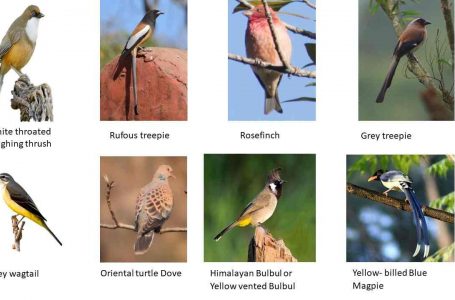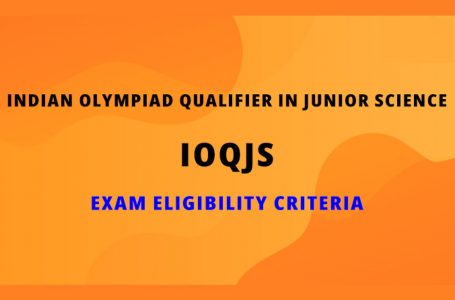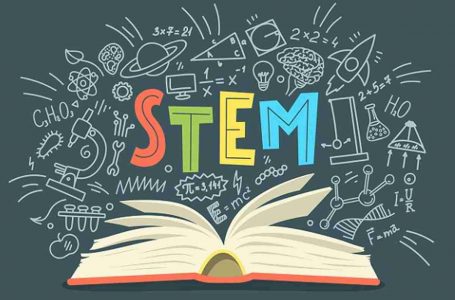Lal Bahadur Shastri – A Man of Great Integrity and Competence

Lal Bahadur Shastri was the Indian freedom fighter who later on went on to become the second Prime Minister of Independent India after Jawaharlal Nehru and is recognized as a man of integrity and competence. Lal Bahadur Shastri devoted more than 30 years to the country. Shastri was a man of great inner strength, gentle and tolerant. He knew people’s language and was a man of vision towards the country’s development.
Table of Contents
The early life of Lal Bahadur Shastri
- On 2nd October 1904, Shastri was born at Mughalsarai in Varanasi, Uttar Pradesh.
- Sharada Prasad Srivastava and Ramdulari Devi, paternal ancestors of Shastri’s had been in service of the zamindar of Ramnagar, Varanasi, and Shastri spent the first year of his life living there.
- When he was a year and a half, his father died of bubonic plague.
- To attend school, Shastri used to swim through the Ganges twice a day and tied books on the top of his head because he didn’t have sufficient money to travel by boat.
- In 1926, Shastri did his schooling at the East Central Railway Inter College in Mughalsarai and Varanasi. And then completed his graduation from the Kashi Vidyapeeth.
- The title “Shastri” meaning “Scholar” was given by Vidyapeeth as a part of his bachelor’s degree award. Though this title became his name.
- Shastri’s family had no links to the independence movement which was emerging then.
- Nisha Kameshwar Prasad Mishra, one of his high school teachers gave Shastri financial support by allowing him to tutor his children. Inspired by Mishra’s loyalty, Shastri took a deep interest in the freedom struggle and started to study its history and the works of several of its famous personalities, like Swami Vivekananda, Gandhi, and Annie Besant.
- In January 1921, When Lal Bahadur Shastri was in the 10th standard. Shastri attended a public meeting in Benares hosted by Gandhi and Pandit Madan Mohan Malviya three months before his final examinations.
- Shastri was inspired by the Mahatma’s request for students to withdraw from government schools and join the non-cooperation movement. Shastri left Harish Chandra High School and joined the local branch of the Congress Party as a volunteer. And then joined in picketing and anti-government protests.
- Shastri was soon arrested and jailed but was then let off since he was a minor.
- During the 1920s, he joined the Indian Independence Movement and was involved in the non-cooperation movement. Shastri was sent to jail for some time by the Britishers.
- Shastri joined the Salt Satyagraha in the year 1930, for which he was jailed for more than two years.
- He joined as the Organising Secretary of the Parliamentary Board of UP, in 1937. Shastri was again sent to prison in 1942 after Mahatma Gandhi issued the Quit India speech in Mumbai.
- He was jailed until 1946.
- Shastri had spent nine years in jail. He utilized his stay in jail by reading books and familiarized himself with the works of western philosophers, revolutionaries, and social reformers.
- On 16th May 1928, Shastri got married to Lalita Devi. The Servants of the People Society (Lok Sevak Mandal), which was established by Lala Lajpat Rai, Shastri became a life member of this society. There Shastri began to serve for the upliftment of backward classes, and then he became the President of that Society.
Political Career of Lal Bahadur Shastri
- Lal Bahadur Shastri became the Parliamentary Secretary in Uttar Pradesh (U.P.).
- Shastri also became the Minister of Police and Transport in 1947. As a Transport Minister, he had designated women, conductors, for the first time. Being the minister in charge of the Police Department, he passed the order that police should use jets of water and not lathis to scatter the agitated crowds.
- In 1952, Shastri was elected to Rajya Sabha from U.P. being the Railway Minister. And he introduced the first machine at Integral Coach Factory in Chennai, in 1955.
- In 1957, Lal Bahadur Shastri became the Minister for Transport and Communications again. And then he became the Minister of Commerce and Industry.
- In 1961, Shastri was elected as Home Minister. And then he named the Committee on Prevention of Corruption. Shastri composed the famous “Shastri Formula” which consisted of the language confusions in Assam and Punjab.
- On June 9th, 1964, Shastri became the Prime Minister of India. He supported the White Revolution, a national campaign to expand milk production. He also served the Green Revolution to increase food production in India.
- Though Shastri remained Nehru’s policy of non-alignment, he also made a relationship with the Soviet Union. In 1964, he signed an agreement with the Sri Lankan Prime Minister Sirimavo Bandaranaike, infirm with the status of Indian Tamils in Ceylon. This agreement is recognized as the Srimavo-Shastri Pact.
- In 1965, Shastri officially visited Rangoon, Burma. And established a good relationship with their Military government of General Ne Win again.
- Throughout his time, India faced another aggression from Pakistan in 1965. Shastri gave permission to the Security Forces to retaliate and said “Force will be met with Force” and earned attention. Indo-Pak war ended on September 23rd, 1965.
- On January 10th, 1966, the Russian Prime Minister, Kosygin, offered to negotiate Lal Bahadur Shastri and his Pakistan counterpart Ayub Khan approved the Tashkent Declaration.
- Independence Activism of Lal Bahadur Shastri
- In 1928, Shastri became an active and experienced member of the Indian National Congress at the call of Mahatma Gandhi. Lal Bahadur Shastri was imprisoned for two and a half years. Later, he served as the Organizing Secretary of the Parliamentary Board of U.P. in 1937. In 1940, Shastri was sent to jail for one year, forgiving individual Satyagraha’s aid to the independence movement.
- On 8th August 1942, Mahatma Gandhi declared the Quit India speech at Gowalia Tank in Bombay, commanding that the British leave India. Shastri, who had just then come out after a year in jail, traveled to Allahabad. For a week, Shastri sent guidance to the independence activists from Jawaharlal Nehru’s home, Anand Bhavan. He worked as an elected representative for United Provinces in 1937 and 1946.
Prime Minister Lal Bahadur Shastri – Major achievements
1. Appeasement of Non-Hindi speaking States
Under the leadership of Gandhi During the freedom struggle, there was a mass mobilization for the replacement of the English language to Hindi and regional languages. The purpose behind this was to fill the gap between the elite class and the common folk, in an attempt to associate them with productive works in nation-building.
However, in a bid to encourage provincial languages the Nehru report supported the making of ‘Hindustani‘ as the official language of India. As English was used by all leaders in all official correspondences so it couldn’t be gotten rid of. Moreover, in terms of how the decision of national language would affect North-South states’ relations little attention was paid to the details of the vernacular language concept.
Though in different parts of the country voices and protests against Hindi were observed, it was Madras that ardently voiced its displeasure to the thought. On January 17th, 1965 an Anti-Hindi Conference was held which was attended by D.M.K. leaders and C. Rajagopalachari.
The Language Policy of the Union Government was criticized deeply during the Anti-Hindi Conference and expressed a firm resolution of the individual to resist the demand for Hindi. An extensive Anti-Hindi agitation was organized by Students in Madras and Madurai, where the agitations took a drastic flip and went on for two months.
With their proficiency in English Students in Madras were able to compete better in the All Indian Administrative Service and worried about losing their lead in the service as a result of the imposition.
Lal Bahadur Shastri, was at first hesitant to translate Nehru’s assurances to Non-Hindi states that ‘no switch over to Hindi would take place until they were ready for it’, following the agitations in Madras; gave assurances to these states that English would continue as the official language. Following this, the agitations died down.
2. White Revolution
With dependencies on agricultural produce and cattle milk production for their livelihoods, India’s vital section of the population is largely agrarian. According to Dr. Verghese Kurian, the milk industry is the only industry that allows a marginalized family to earn a small amount of cash every day.
In 1965 Dr. Kurien set up the National Dairy Development Board (NDDB) and the Gujarat Cooperative Milk Marketing Federation (GCMMF) or the Amul Dairy Co-operation under the leadership of Prime Minister Lal Bahadur Shastri.
‘Operation Flood’ a project by NDDB became the world’s largest dairy development program due to The White Revolution only. In 1998 India from being a milk deficient nation surpassed the USA by becoming the world’s largest producer of milk. In 30 years, the production of milk per person multiplied by making dairy farming India’s largest self-sustainable rural employment generator.
3. Jai Jawan, Jai Kisan – Green Revolution
Following the exit of colonial rulers, one of the biggest problems for India was a food shortage. Lal Bahadur Shastri’s tenure as PM was characterized by severe food shortages, with imports of food touching 10 million tonnes which eased to avoid scarcity. He requested a one-day fast every week to lessen the demand for food.
India was attacked by Pakistan when Shastri ascended the role of Prime Minister. As mentioned earlier this period saw a scarcity in food grain production in the country. He elevated the slogan ‘Jai Kisan, Jai Jawan’ (Hail the Soldier, Hail the Farmer) to boost the morale of the Indian Army and to boost the farmers to do their best to increase the production of grains for reducing imports.
Subramaniam was the elected Minister of Food and Agriculture at the time of Lal Bahadur Shastri Prime Ministership. They worked together to increase food production through increased government support. Taking the advice of the Foodgrains Prices Committee offers incentive prices for grains that are higher than acquirement and market costs. Subramaniam also supported expanding government reserves of grains by purchasing them in the open market on incentive prices.
In 1965 Subramaniam published the ‘Agricultural Production in the Fourth Five-Year Plan: Strategy and Plan’ which signified the government’s commitment towards the ensuing Green Revolution.
4. Sirima-Shastri Pact
On October 30th, 1964 the Sirima-Shastri Pact was signed between India and Ceylon (Sri Lanka) which concentrated on the citizenship of Indian workers in Ceylon. The pact was drafted after six days of negotiations.
The purposes of this pact were to identify all people of Indian-origin in Ceylon who weren’t citizens of either India or Ceylon; should become citizens of either India or Ceylon. The Indian government would accept the repatriations of persons within 15 days. Ceylon agreed to allow those people who were employed during the signing of this pact, to continue with their jobs until the date of their repatriation.
5. Repatriation of Indians from Burma
Burma (Myanmar) had a democratic Parliamentary government between 1948 and 1962. It was, however, bothered with extensive conflict and internal struggle. Following constitutional disputes, the federal and ethnic tensions weakened the Burmese government. To restore political order the Prime Minister of Burma, U Nu was compelled to accept the military rule under the interim rule of General Ne Win by 1958. After 18 months the military finally stepped down but there was a gaping crack in U Nu’s government which left it vulnerable for rivals to exploit its flaws.
On March 2nd, 1962, a military coup d’état was staged by General Ne Win, thereby opposing the constitutional and democratic government, and installing military rule.
Under military rule, many Indians who had been accustomed to the Burmese culture for centuries becomes targets for persecution and prejudice by the people and the government. General Ne Win ordered the large-scale purge of Indians from Burma.
The Central government observed all the processes of repatriation and arranged for the identification and transport of Indians from Burma. Local governments were asked to provide enough facilities to repatriates upon arriving on Indian soil.
Prime Minister Lal Bahadur Shastri made an official visit to Rangoon, Burma in December 1965 along with his family, and re-established warm relations with the military government of General Ne Win in Burma.
6. Indo-Pakistan War and Tashkent Agreement
One of Prime Minister Lal Bahadur Shastri’s greatest moments as the leader of the nation was the Indo-Pakistan War of 1965. The war was started when Pakistan laid claim to half of the Kutch Peninsular in a battle against the Indian Army.
Shastri said that, while India had no plans of causing trouble with its bordering neighbors, and that the country’s focus of using its limited resources was for economic progress; under the likelihood of an intrusion, the government would be quite clear in its objective of protecting the
nation, and its duty during this regard would be wilfully and uncompromisingly executed.
The war with Pakistan continued for 5 months, between April and September of 1965, and resulted in losses of about 3000 to 4000 people on both sides.
On September 23rd, 1965, the United Nations-mandated a ceasefire resulting in the war ending between India and Pakistan. In 1965 after the announcement of the ceasefire with Pakistan Prime Minister Shastri and the then President of Pakistan, Ayub Khan, entered an agreement in Tashkent (formerly of USSR, now part of Uzbekistan), arbitrated by Premier Alexei Kosygin.
India and Pakistan signed the Tashkent Declaration on January 10th, 1966 to give away the captured regions of each other by both parties and return to the 1949 ceasefire line in Kashmir.
Lal Bahadur Shastri – Death
Lal Bahadur Shastri died due to a heart attack on 11 January 1966. He was bestowed the Bharat Ratna India’s highest civilian award posthumously in 1966.
Lal Bahadur Shastri was referred to as a person of great integrity and competence. Shastri was humble, tolerant with great inner strength who knew the language of the common man. He was strongly influenced by the teachings of Gandhi and was also a person of vision who led countries towards growth.
Shri Shastri Memorials
- Shastri was recognized for his loyalty and humility throughout his life. Lal Bahadur Shastri was the first person to be posthumously bestowed the Bharat Ratna, and a memorial “Vijay Ghat” was built for him in Delhi.
- Numerous educational institutes, Lal Bahadur Shastri National Academy of Administration (Mussoorie, Uttarakhand) is entitled after him.
- In 1995, Lal Bahadur Shastri Institute of Management was founded in Delhi by the Lal Bahadur Shastri Educational Trust’s is one of the top business schools in India.
- The Shastri Indo-Canadian Institute was titled after Shastri due to his role in promoting scholarly activity between India and Canada.
- Lal Bahadur Shastri Memorial operated by Lal Bahadur Shastri National Memorial Trust has situated next to 10 Janpath his residence as Prime Minister, at 1, Motilal Nehru Place, New Delhi.
- In 2011, Shastri’s 45th death anniversary, Uttar Pradesh Government announced the renewal of Shastri’s family house at Ramnagar in Varanasi and announced plans to convert it into a biographical museum.
- Varanasi International Airport is named after Lal Bahadur Shastri.
- Lal Bahadur Shastri Centre for Indian Culture with a Monument and a street in the city of Tashkent, Uzbekistan is titled after him.
- Some stadiums are named after him in the cities of Hyderabad, Andhra Pradesh Ahmadabad in Kollam, Kerala, Gujarat, and Bhawanipatna in Odisha.
- The Almatti Dam is renamed Lal Bahadur Shastri Sagar in Northern Karnataka constructed across the River Krishna. The foundation stone was placed by him.
- MV Lal Bahadur Shastri a Cargo Ship title is given after him.
- RBI issued coins in the denomination of Rs.5 as his birth century celebrations.
- The Left Bank Canal from the Nagarjuna Sagar Dam in AP is entitled Lal Bahadur Shastri Canal which is 295 km in length.
- Life-size statues of Shastri are built at New Delhi(CGO Complex), Mumbai, Bangalore(Vidhana Soudha), Almatti Dam Site, Ramnagar-UP, Hisar, Visakhapatnam, Nagarjuna Dam site, Warangal.
- Life size bust of Shastri is erected at Trivandrum, Pune, Varanasi (Airport), Ahmedabad (lakeside), Khrushetra, Shimla, Kasargod, Indore, Jalandhar, Mhow, Uran.
- Some major roads in the cities of New Delhi, Mumbai, Pune, Puducherry, Lucknow, Warangal, and Allahabad bearing the name of the legend.
- Lal Bahadur Shastri Medical College was founded in Mandi, Himachal Pradesh.
- Shastri Bhavans was founded in New Delhi, Chennai, Lucknow
- In 2005, the Govt. of India created a chair in his honor in the field of democracy and governance at Delhi University.
Some unknown facts about Lal Bahadur Shastri
- India’s 2nd Lal Bahadur Shastri shares his birthday with Mahatma Gandhi that is on 2nd October.
- In 1926, he got the name ‘Shastri’ in Kashi Vidyapeeth University as a mark of scholarly success.
- Shastri swims the Ganga twice a day to attend school and ties books on the top of the head because he didn’t have enough money that time to take the boat.
- When Lal Bahadur Shastri was the Minister of Uttar Pradesh, he was the first person who had used jets of water to disperse the crowd instead of the lathi charge.
- He gave the slogan “Jai Jawan Jai Kisan” and played a crucial role in developing India’s future.
- He went out of jail because he took part in the Non-Cooperation movement at the time of the Freedom Struggle with Gandhi Ji but he was let off as he was still a lesser of 17 years.
- As a Transport Minister after independence, Shastri founded the provision of female drivers and conductors in public transportation.
- At his wedding, he accepted a Khadi cloth and spinning wheel as a dowry.
- He joined in the Salt March and went to jail for two years.
- When Shastri was a Home Minister, he started the first committee on Prevention of Corruption.
- Shastri had also integrated the idea of the Green Revolution to raise the demand for India’s food production.
- In 1920, Shastri linked with the freedom movement and worked as a renowned leader of the Indian National Congress.
- Not only this, but he had also supported the promotion of the White Revolution for increasing milk production in the country. He had founded the National Dairy Development Board and encouraged the Amul milk cooperative based at Anand, Gujarat.
- On 10th January 1966, he signed Tashkent Declaration with the Pakistan President, Muhammad Ayub Khan to end the 1965 war.
- Shastri lifted his voice against the caste system and the dowry system.
- Shastri was an extremely disciplined person with high self-esteem and morals. Shastri did not even have a car after becoming a Prime Minister.
Conclusion
Lal Bahadur Shastri has a great history of being a freedom fighter, nationalist, and leader of the nation. He was primarily involved with the basic economic problems of the country then-food lack, poverty, and unemployment. Lal Bahadur Shastri’s death remains a secret, though officially reported as a heart attack, after signing the Tashkent Agreement on January 11th, 1966. He was the primary person to posthumously be awarded the Bharat Ratna, India’s most prestigious civilian award.





